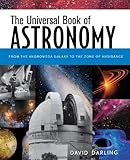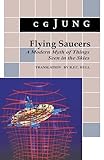
 I don’t know whether Jung was right when he wrote that “today, as never before, people pay an extraordinary amount of attention to the skies.” I can’t say whether this was true for humanity in 1957 but it’s certainly been the case for me this past year. Having pretty much given up trying to make sense of terrestrial life, I decided instead to turn my attention skyward. This interest led me to various guides—books like The Birds of North America, The Universal Book of Astronomy—which in turn led to my losing important friendships, damaging relationships with loved ones, severely impairing my already shaky ability to hold the interest of casual acquaintances at parties. With The Audubon Field Guide to the Weather, I hit rock bottom. Seconds into a cocktail hour disquisition on the poetics of mammatus cloud formation, I detected—and found myself identifying with—the antsyness, the despair, the very real panic in the person who had had the misfortune of hitting up the chips and dips table at the same moment as I.
I don’t know whether Jung was right when he wrote that “today, as never before, people pay an extraordinary amount of attention to the skies.” I can’t say whether this was true for humanity in 1957 but it’s certainly been the case for me this past year. Having pretty much given up trying to make sense of terrestrial life, I decided instead to turn my attention skyward. This interest led me to various guides—books like The Birds of North America, The Universal Book of Astronomy—which in turn led to my losing important friendships, damaging relationships with loved ones, severely impairing my already shaky ability to hold the interest of casual acquaintances at parties. With The Audubon Field Guide to the Weather, I hit rock bottom. Seconds into a cocktail hour disquisition on the poetics of mammatus cloud formation, I detected—and found myself identifying with—the antsyness, the despair, the very real panic in the person who had had the misfortune of hitting up the chips and dips table at the same moment as I.
 Then I found Carl Gustav Jung. In Flying Saucers: A Modern Myth of Things Seen in the Sky I finally found what I was looking for. Here was a book that allowed me to consider the heavens, to really get in deep up there, without losing touch with the home planet. On the contrary, Jung persuaded me that the things we see, or think we see, flickering in the heavens, reveal a great deal about what is going on right here. We project our anxieties and hopes onto the wide movie screen of the sky in specific, discernable images. His case study of course is UFOs. In the creepy flying saucers reported worldwide Jung discovered a modern archetype, a symbol recently emerged from the collective human unconscious. Writing in the middle of the twentieth century, Jung speculated that widespread anxiety about technology, particularly Cold War nuclear fears, resulted in the formation of a new universal mythos: sleek titanium vessels from the other galaxies sent to watch over us, to give us hope for escape, to save us. A little green Jesus.
Then I found Carl Gustav Jung. In Flying Saucers: A Modern Myth of Things Seen in the Sky I finally found what I was looking for. Here was a book that allowed me to consider the heavens, to really get in deep up there, without losing touch with the home planet. On the contrary, Jung persuaded me that the things we see, or think we see, flickering in the heavens, reveal a great deal about what is going on right here. We project our anxieties and hopes onto the wide movie screen of the sky in specific, discernable images. His case study of course is UFOs. In the creepy flying saucers reported worldwide Jung discovered a modern archetype, a symbol recently emerged from the collective human unconscious. Writing in the middle of the twentieth century, Jung speculated that widespread anxiety about technology, particularly Cold War nuclear fears, resulted in the formation of a new universal mythos: sleek titanium vessels from the other galaxies sent to watch over us, to give us hope for escape, to save us. A little green Jesus.
Reading Jung on UFOs fills me with longing. It seems that somewhere along the way—after Jung died—UFOs morphed from an archetype of hope and redemption into something else, a symbol of widespread alarm regarding abduction and its unhappy corollary, anal probing. I suspect this shift happened somewhere in the 1970s. Alas this is the fallen world in which we now live.
A word of warning: Jung is one of the worst prose stylists since Hegel. But it’s worth the slog. Just as you begin to tire of his long, cluttered Middle European sentences, his schizo numerological musings, he’ll present you with a perfectly burnished thing of beauty. Here is Jung on a new class of humanity, The Pilot:
His field of vision is occupied on the one hand by the complicated control apparatus before him, and on the other by the empty vastness of cosmic space. His consciousness is concentrated one-sidedly on details requiring the most careful observation, while at his back, so to speak, his unconscious strives to fill the illimitable emptiness of space. His training and his common sense both preclude him from observing all the things that might rise up from within and become visible in order to compensate the emptiness and solitude of flight high above the earth. Such a situation provides the ideal conditions for spontaneous psychic phenomena, as everyone knows who has lived sufficiently long in solitude, silence, in the emptiness of deserts, seas, mountains or primeval forests.
True, this is almost too sad to contemplate. But, fellow earthling, the heavens are all around us. We might as well learn to deal with it.
More from a Year in Reading 2010
Don’t miss: A Year in Reading 2009, 2008, 2007, 2006, 2005
The good stuff: The Millions’ Notable articles
The motherlode: The Millions’ Books and Reviews
Like what you see? Learn about 5 insanely easy ways to Support The Millions









